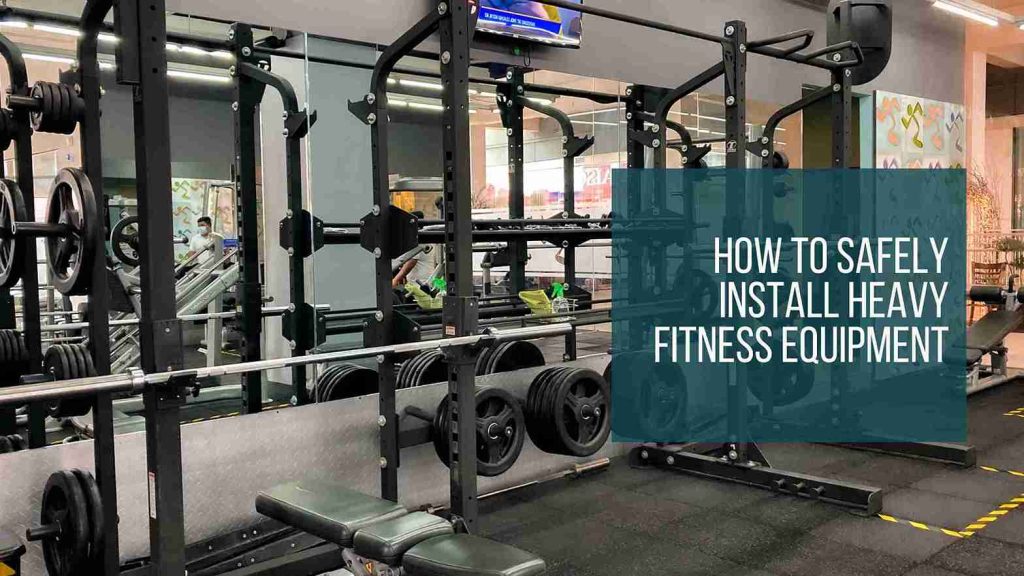Creating a home gym is a powerful step toward better health and convenience. But installing heavy machines like treadmills, ellipticals, home gyms, and weight racks isn’t as simple as placing them in a room and plugging them in. Proper setup is essential to protect your equipment, your home, and yourself.
Whether you’re setting up a single piece of equipment or outfitting a full workout space, safe and strategic installation is critical. Many homeowners are tempted to handle it alone, but large machines can present serious safety risks if handled improperly.
This guide walks you through the essentials of safe fitness equipment installation, from the benefits of professional setup to how to protect your home’s structure and ensure long-term use.
Heavy Equipment Requires Expert Setup
Unlike lightweight household furniture, fitness machines often weigh hundreds of pounds, come in awkward shapes, and involve electrical components. This makes the installation process more complex—and more important to get right.
The Dangers of DIY Installation
Attempting to install large equipment without help can lead to personal injury, property damage, and expensive equipment malfunction. Some machines require precision calibration or electrical grounding, which may not be obvious to the average user.
Even when assembly instructions are included, they often assume a level of experience with tools, spatial awareness, and lifting techniques. One wrong move while lifting or connecting a component can break parts or void the manufacturer’s warranty.
For those searching “treadmill assembly near me” after wrestling with parts and confusing diagrams, you’re not alone. Many homeowners turn to pros after an attempt gone wrong—when the damage has already been done.
Benefits of Professional Help
Hiring trained technicians for safe fitness equipment installation comes with several advantages:
- Proper assembly using manufacturer instructions and torque guidelines
- Correct placement for safety, ventilation, and floor leveling
- Electrical connections made to code and tested safely
- Calibration and testing of digital features, inclines, and motors
- Transport assistance to move machines safely through tight spaces
If you’ve invested hundreds or thousands in quality equipment, protecting that investment with expert setup is worth the cost. Professionals have the tools, experience, and strength to get the job done right the first time.
Equipment That Should Always Be Professionally Installed
- Treadmills with incline motors and integrated screens
- Multi-station home gyms
- Heavy squat racks and cages
- Ellipticals and stair climbers
- Cable machines and pulley systems
- Vibration platforms or rowers with power components
Even if you consider yourself handy, these machines deserve attention from people trained in heavy equipment setup tips. The complexity and risk factor are simply too high to DIY without extensive experience.
Avoiding Floor and Wall Damage
Installing fitness equipment improperly can have long-term consequences—not just for the machine, but for the structural elements of your home. Flooring damage, wall marks, and even subfloor stress can happen if weight isn’t properly distributed or padding is skipped.
Use Protective Flooring
Rubber mats, interlocking foam tiles, and vinyl gym flooring are critical for any home gym. They:
- Absorb shock from dropped weights
- Prevent scratching or denting of hardwood, tile, or laminate
- Protect carpet from pressure points and foot traffic
- Provide slip resistance for both machines and users
For especially heavy machines like treadmills or squat racks, thicker mats (½ inch or more) are recommended. Mats should extend at least 12–18 inches beyond the machine’s footprint for maximum protection.
Plan for Weight Distribution
Heavy machines should never be placed directly on soft flooring or unsupported surfaces. For second-floor installations, ensure the floor can support the load—not just of the machine, but of the user in motion.
Place heavier machines like cable systems and treadmills near joists or walls, where structural support is strongest. If you’re unsure about floor load-bearing capacity, consult a contractor or structural engineer.
Protect Walls and Ceilings
Rowers, ellipticals, and pull-up stations can shift during use and scrape nearby walls or molding. Leave at least 2–3 feet of clearance behind and on both sides of your equipment. For wall-mounted racks or suspension trainers, install into studs or use proper anchors to avoid ripping out drywall or plaster.
Avoid setting equipment directly under ceiling fans or pendant lights. Machines like rowing machines or climbers often require overhead clearance that may not be obvious until it’s too late.
These heavy equipment setup tips will help ensure your home gym looks great—and stays that way—even with daily use.
Long-Term Maintenance Tips
Installation is only the first step. To keep your machines running smoothly for years to come, long-term care and maintenance are essential. Even the best equipment can fail early without regular upkeep.
Create a Cleaning Routine
Sweat, dust, and pet hair can wreak havoc on machines, especially on moving parts or electronic displays. After every workout:
- Wipe down touchscreens and grips with a non-abrasive cleaner
- Vacuum or sweep around the base of equipment
- Clean rubber mats to prevent mildew buildup
Once a month, do a deeper clean around belts, under motors, and inside housing panels if accessible.
Lubricate Moving Parts
Treadmills, ellipticals, and rowers often require belt or rail lubrication to minimize friction and wear. Follow the manufacturer’s guidelines for lubrication schedules and recommended products.
Neglecting this step can lead to increased strain on motors and a shorter machine lifespan. Some treadmills even have built-in reminders for lubrication—don’t ignore them.
Tighten Bolts and Inspect Cables
High-motion equipment vibrates, and over time, bolts can loosen. Every few months, inspect and retighten any visible screws or fasteners. Look for signs of wear on cables, fraying, or rust on exposed hardware.
This routine inspection keeps your setup safe and helps avoid mid-workout surprises or costly repairs.
Protect Electronics and Software
Many modern fitness machines include touchscreens, Bluetooth connectivity, or subscription-based workout content. To protect these features:
- Use a surge protector for all powered machines
- Keep software updated to avoid glitches
- Avoid placing machines where extreme temperatures or humidity are common
These heavy equipment setup tips not only extend your equipment’s lifespan but also ensure a smooth, enjoyable workout experience every time.
Final Thoughts
Installing heavy fitness equipment at home is an investment in your health—and your property. Whether you’re adding a single treadmill or designing a complete home gym, how you install and maintain each piece makes a difference.
The safest route often starts with a professional. Instead of searching “how to install a treadmill by myself,” look up trusted providers with strong reviews or search treadmill assembly near me to find experts who can ensure your gear is set up right. Proper setup means fewer injuries, longer equipment life, and peace of mind.
Once your equipment is in place, keep your space protected with flooring, clearance, and regular maintenance. From safe fitness equipment installation to long-term care, these strategies will keep your workout area clean, functional, and damage-free.
Building a home gym should feel empowering—not overwhelming. With careful planning and a little expert guidance, you’ll enjoy the results for years to come.



